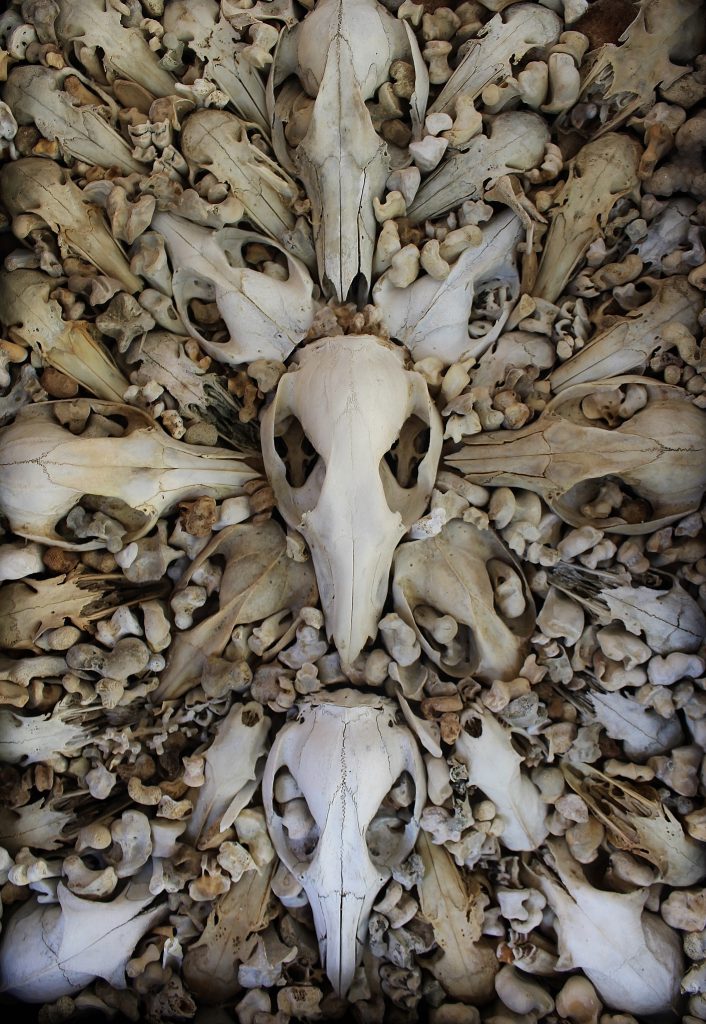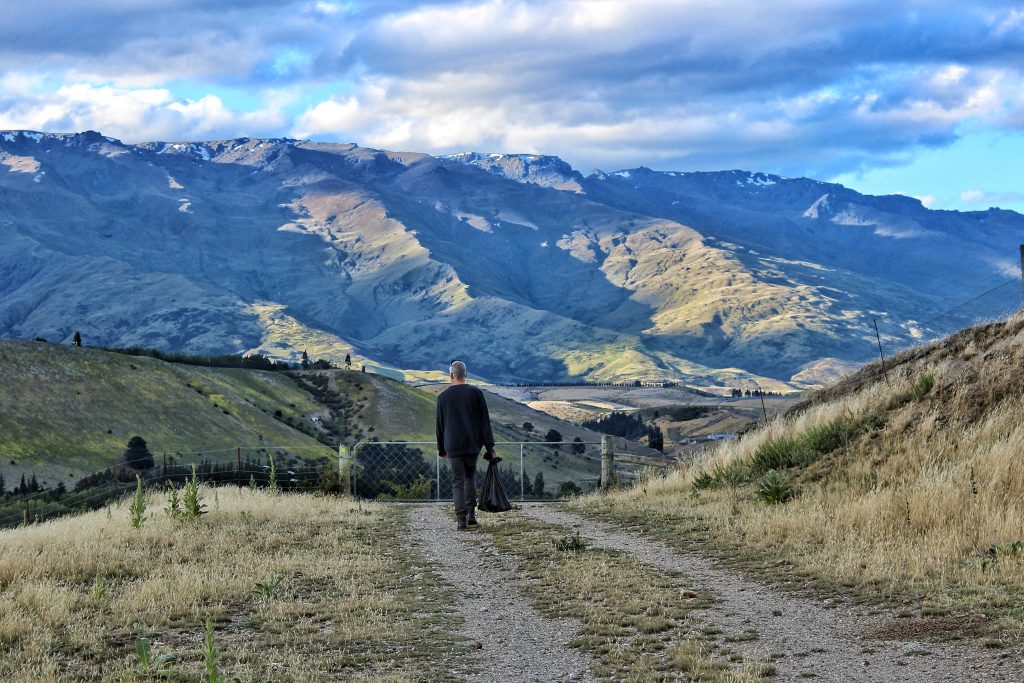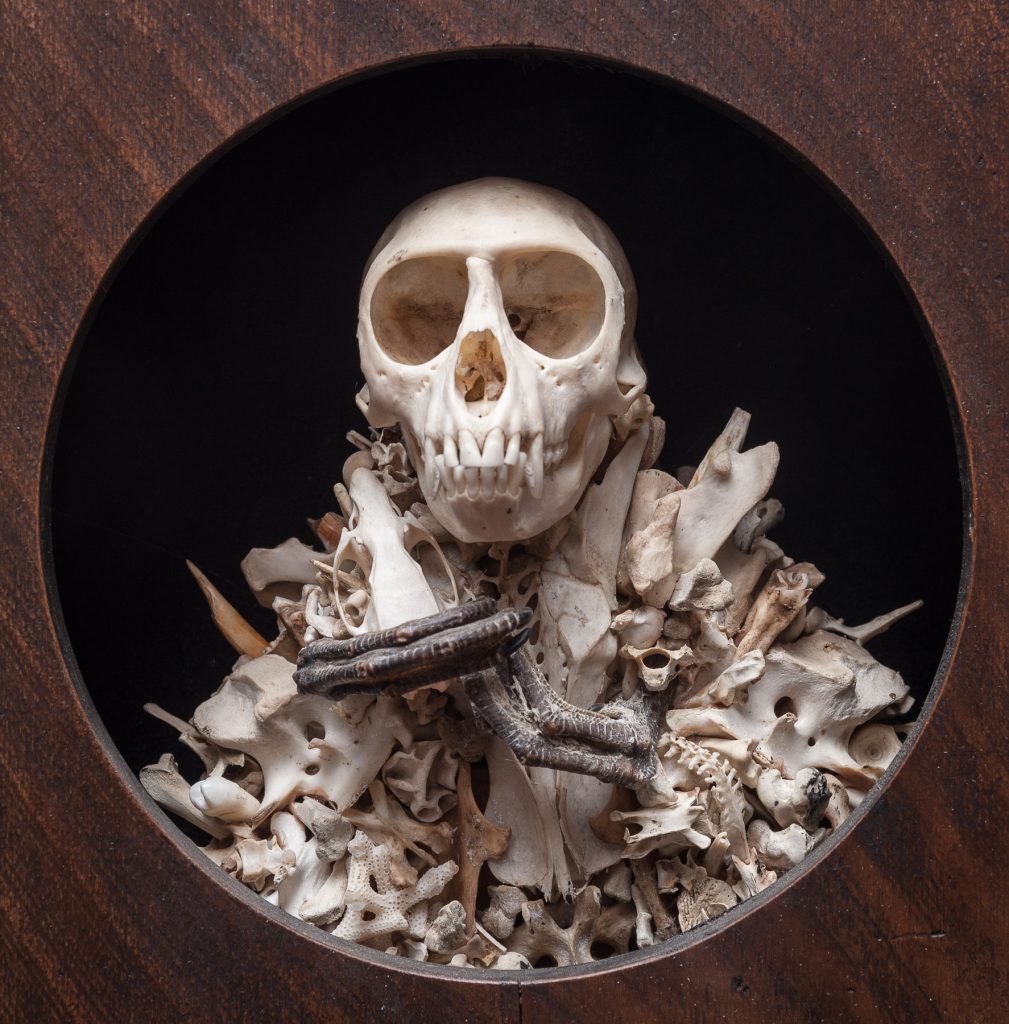Bruce Mahalski has great bone structure.

Bruce Mahalski makes art from bone. A sculptor and mural artist, Bruce is probably best known for running the incredible Dunedin Museum of Natural Mystery (highlights: the mummified housecat and legendary musician Chris Knox’s painting of the 1977 line-up of his legendary band The Enemy), and for being the Dunedinite who most looks like David Byrne from the Talking Heads. But it is bone art that he is perhaps most passionate about, as well as the drylands of Central Otago that are his collecting grounds.
“Biological material is taonga,” Bruce says, “my art is my religion”. For him, finding a bone in the outdoors is like discovering “a jewel that someone’s dropped.” His pieces are striking assemblages of these jewels, intricate works that speak to meanings exceeding the sum of their parts. Innately linked to the environment, his sculptures reflect his concern for the impact of humankind on our world.
He collects the bones for his art from animals that lived and died on the land he walks over, especially in Central Otago, a region that has been a passion since childhood and is still a favourite place to go collecting; it’s so dry in many places that he can often find full animal skeletons on the ground. Anywhere else, they would be lost in the vegetation. In Central, he can pick up a kilogram of dry bones every two hours in a favoured spot, bones that are often weathered or bleached; Bruce says he likes the unusual appearance and textures that weathering produces in the material.

It’s not a free-for-all; foraging has its legal realities. There are myriad laws in New Zealand around collecting biological material such as bones, feathers and marine animal remains and, if you’ve got a bone to pick, there are many variables to consider: Is it a native or non-native species? Was the material found on private land, on public conservation land or at an archaeological site?
For those of us scavengers without the knowledge, time or patience to navigate the rules, Bruce has done the work. He has put together a pamphlet on the subject (Can I pick up that bone, feather or shell? The laws around collecting biological material in New Zealand) which summarises the rules and responsibilities around picking up and taking away biological material. He explains, in plain English, about the 1953 NZ Wildlife Act and the Ngāi Tahu Claims Settlement Act (1998), covering the protocols around specifics like marine mammals and Moa bones. For example, if you find the bone or the feather of a native animal, can you pick it up and take it home? The short answer is “no”. But if you run across the ossified remains of a possum, magpie, weasel or polecat, fill your boots.
As for his art, Bruce considers it to be a form of painting in 3D. He works to hide the impact of his own hand, aiming to “integrate bones and surfaces in a relatively seamless way”, with each bone transitioning naturally into the bone placed adjacent (read about Bruce’s process in his 2018 book Seeds of Life). He either starts with a firm idea or uses a large central piece, such as a skull, as a focal point and builds around it.
The biggest bone pieces, what he terms his “undercoating”, form a secure structural basis. Once these main elements are in place, he adds medium-sized bones to build up a “mid-tone” range. The smallest, most delicate fragments are added last. Most of his pieces have a base of wood, paper or wire and he strives to them robust but, given the material and layering involved, some can be quite fragile. Despite this, Bruce prefers that his works are not hidden behind glass; if they become dusty or home to the odd spiderweb, he has no problem with these organic additions.

PHOTO: Kat Spears
Bruce often creates pieces with an intrinsic link to a place. For such pieces, he chooses to use only material found in a particular location, sometimes restricting the makeup to material coming one species. He also has an interest in historical sites, and how these have left their marks, especially the old mine tailings in Central Otago and parts of Taranaki. “I’m very interested in the 1860s and the land wars,” he says. “I like going round old battle sites and trying to see the past in my mind.”
Bone cleaning is a huge part of Bruce’s work as a collector and artist. This is messy and time-consuming, whatever method is utilised. He has a tank of dermestid beetles in his studio, who cleverly clean the bones by eating all the meat and tissue off them. Other methods include boiling the bones and using a soaking process called cold water maceration. But the practical, scientific aspects of what he does are balanced by a reverential side to the work, and the feelings it can inspire-of saintly bones in European churches, of the biological material favoured in some Pacific and African arts.

Bruce’s deep affection for the bones he collects is clear in many of the astonishing pieces he puts together. I felt it too at a meeting in Bruce’s home in preparation for this article, when he showed me some bones he had recently been given. They were from a juvenile Haast’s eagle, the largest eagle known to have existed on earth, extinct for some 600 years. I’d seen these only through artists’ impressions and a skeleton behind glass in a museum.
Holding the bones in my hand, I felt as I did when looking at dinosaur fossil casts as a small boy, full of wonder and fascination, connected to a time long gone, just like the facets of the man that fit together as seamlessly as the bones in his art.
IAN LOUGHRAN

